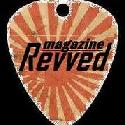(click on picture to open file)
By: Michael D. Vogel
© November 1, 1996. Michael D. Vogel. All Rights Reserved.
Published in:
The Album Network magazine – November 15, 1996
With all the diverse musical influences and genres that are streaming out of the left coast, down South and back East, growing up in the Midwest can sometimes be a little overwhelming. When it comes right down to it, except for the dynamic music scene prevalent in Chicago, there really hasn’t been an identifiable Midwest rock sound – until now.
“We are just the product of growing up in the Midwest and being bombarded by influences from everywhere,” admits Stir bassist Kevin Gagnepain by phone from his home in St. Charles, Missouri. To this point, Stir has gained a loyal following through their never-ending tour schedule and their debut release on Aware Records.
Stir’s Midwestern work ethic and hard-rocking live shows have quickly won over regional audiences on the band’s never-ending tour. The result is a hodgepodge of 70’s rock nostalgia along side modern rock, mixed with a little down-home country appeal, which has helped the band quickly bridge the gap between indie label success and a wider popular acceptance.
Already receiving significant airplay at Alternative and Active Rock Radio, Stir doesn’t fit squarely into any predetermined niche. These guys simply play straight-ahead, accessible rock & roll. If you’re looking for a comparison, Stir falls somewhere between Bad Company and the Dave Matthews Band.
In a nutshell, what’s the story behind Stir?
Kevin Gagnepain: “Andy and Brad have known each other for quite some time, dating back to when they were in grade school. By the time they had reached high school, they had developed a passion for music and joined the school jazz band. I was introduced to Brad separately, and after discussing the possibilities of starting a band, I was introduced to Andy. We put together a cover band with another singer, performing locally for about a year. We started out as a five-piece, with a woman on keyboards and a frontman for the band. Over time, the lineup was scaled down to just the three of us with the departure of both the keyboardist and the frontman. It was at this time, as well, that we started incorporating more original material into our sets.
“Our first official show as Stir was back in January of 1994. It was all new music, incorporating nothing from the previous lineup. We wanted to separate ourselves from that as best we could. We adopted a ‘road philosophy’ and headed out of town. Being a local celebrity wasn’t that important to us – we wanted to experience what it was like to be on the road as a traveling band. It seems that most bands that play locally – St. Louis, Columbia, Kansas City, etc. – never really go any farther than that. We already had firsthand knowledge of this type of experience with our first band, and we didn’t want to duplicate that kind of lack of productivity again.
“It was at this point that we decided to aim for the next plateau and wait for everything else to catch up. We recorded a few songs for demo tapes and landed a few showcases at SXSW in 1995. It was there that we met Gregg Latterman. He was very receptive to the demos we had recorded, but felt the quality of the recordings needed some work. We went back into the studio and re-cut some more tracks, one of which was ‘Don’t Understand’ that was included on the Aware II compilation.”
How has growing up in the Midwest helped shape the musical direction of the band?
KG: “Being from the Midwest, you get influences from all around. Music tends to be more linear on the coast, where a song only lasts until another comes to take its place. The Midwest is somewhat different in that music tends to circle around a bit more. Country also plays a major influence on the music from the Midwest, whereas on the coast, things tend to be a bit more down home. For the most part, the Midwest is just a big melting pot of music.”
Bands seem to spend a lot of time thinking of a name, because it’s often the defining point of who and what the band is. Where did Stir come from?
“You’re absolutely right. We had many heated battles as to what we should call the band. We didn’t want anything that sounded too pretentious or was too hard to figure out or even pronounce. After several weeks of pouring through dozens of potential names, the name Stir almost magically appeared. We were at a local club, where once a week local musicians get up on stage together and do this great big jam. On the inspiration of the many different musicians and styles that were present, and after a few rounds of beer, Andy spit out, ‘How about Stir?’ The rest is history.”
There’s an obvious passion in the music. It seems that there’s something going on that’s beyond being the typical rock band. Was it difficult to capture the energy that’s present in your live shows on the debut record?
“Yes and no. There are times on the record where we hint at it, but, without a doubt, there is a lot more energy in our live shows. There is that connection with the live audience and the visible reactions to the music, something that just isn’t possible during the recording process. While in the studio, distractions need to be kept to a minimum. By making this sacrifice while recording, we cut loose during the live shows and reap the rewards of a rabid audience.
“In all, though, that is very difficult for any artist to achieve. It’s really hard to bring that kind of energy level without having some sort of audience participation. There is a certain energy vibe that is in the air during a live show that is not present while in the studio. It becomes a challenge to the artist him/herself to try and bring that to tape. Personally, I think we succeeded in some places and didn’t in others. But that’s all part of the learning process.
“Our goal, after a little more time in the studio, is an attempt to capture more of a live energy feel for our next record. There are certain sacrifices, energy-wise, that you make when recording an album. On the other hand, there is an element of perfection for a studio album, through sonic width and girth, that is just not obtainable for a live recording. The musician is somewhat like a painter: the studio becomes a virtual pallet where almost any picture can be painted, whereas in the live arena, the musician is simply a vehicle to express the music itself. Basically, they are two completely different animals.
“As far as passion is concerned, there are enough bands out there in the rock and alternative worlds that are doing all the complaining and grieving that needs to be done. It has gotten to the point where it is almost a cliché to be a band that is angry at the world. There was a time when music was a way for people to come together and express their feelings. This is where we aim to be, sharing positive feelings and having a good time.”
Do you feel it’s easier to address issues on the human condition in your music, or in everyday conversations?
“I think we hint at them in our music, but we do it through very light personal situations. We’re not here to preach or be political by any means. That is something we try and keep separate from the band. True insight into the soul is a very personal thing, so we like to save that for our own private conversations with those that we know. As far as imposing our beliefs on what’s going on in the world, we’re not going to do that in our music, that’s not what we want to do. Who is some guy in band to tell me what I think the world should be like? He’s the one in the spotlight and making money. But to be in a band is a completely different lifestyle than the rest of the world. You’re constantly on the road, meeting people and promoting this image of who you are. I can’t say that everybody who does it is wrong because there are some that do it very well and are right on the money. But, I still question whether or not an artist should be pushing that on to the impressionable youth of today, who believe every word that is said.”
Does the band see itself as a potential role model for the kids of today?
“I don’t think that anybody really wants to be in that kind of situation. It wouldn’t be fair to expect anyone to alter the way they do things in their own life because they are a role model to others. A role model is someone who, through their own natural actions, are looked up to by others. Musicians and athletes, on the other hand, are put up high on this pedestal. It is really just a distorted sense of reality where the audience controls what the artist does. At the same time, anybody who happens to be caught up in a situation like this should recognize what is going on and take some sense of responsibility.
“We would hate to be responsible for somebody else’s thoughts or actions. We see it in other situations and as long as the artist has some sense of responsibility, but at the same time remains true to them selves…otherwise they become more of a tool, creating art for others. We don’t want to preach to anybody.”
The bass line in “Ladybug” reminds me a lot of “Detroit Rock City.” Was Gene Simmons a major influence on you?
“I would be a liar if I said KISS wasn’t the second group in my life to affect me. The first, obviously, was the Beatles, whose extremely radical lyrics and melodies caught my immediate attention. But when KISS broke onto the scene, I was just blown away. The sheer size of their stage productions and the make-up on their faces made them out to be larger than life. At the time, I was a piano player so it was never a conscious decision that I wanted to play bass like Gene Simmons. But, I guess, if you spend that much time listening to any particular artist, they are going to have some sort of profound affect on you and the way you write and play music. In fact, now that you mention it, the bass line in both songs are fairly similar; ‘Detroit Rock City’ is actually ‘Ladybug’ backwards, and a fourth up.”
Why are there no song lyrics in the liner notes?
“We wanted to create a strong bond between ourselves and those who buy our records and come to our shows. By not including the lyrics to each song, the listener is forced to come up with their own interpretation of the music. After all, Salvador Dali doesn’t explain to you what was in his head when he painted a certain picture; the understanding is left up to the participant. The same is true for individual songs. Sure, that particular song has some meaning for the writer, but at the same time, it can have a completely different interpretation to the listener. It all boils down to an audience participation issue.”
Most of the material came from the fallout of your previous band, The Choice. With the constant touring schedule, where and when have you guys been able to write new material?
“We have all been writing individually on our days off. We keep an acoustic guitar and a practice bass in the van so that whenever the whim hits us, we are ready to go. We all have tons of ideas that have been sitting on the back burner for some time. This is the material we need t get down on tape before we go back into the studio. Overall, it is definitely a lot harder, though, trying to write while out on the road.”
Are you incorporating any new material into your live sets?
“We have been playing some very old songs every now and then, that weren’t part of the record. We’ve also thrown in some new ideas, but these are mostly instrumental segues between songs or are meant as a musical introduction to the next song we play. In the end, it is this material that we will explore and develop further when we go back into the recording studio. For the most part, we just are throwing instrumental ideas out to the audience and see what the reaction is.”
Originally, Stir was signed to Aware Records, but you’ve now moved on to “The Tower.” How has this experience, moving from a small label up to a major like Capitol, changed the band’s perspective on the whole music process?
“The transition was pretty smooth. As far as the amount of time we spend in a day doing other things than playing music, like phone interviews for example, is definitely growing at a rapid rate. So, the transition is far from being over. Every step has been a relatively small one. We have all been planning ahead so that nothing really comes up that we weren’t prepared for. Hopefully, things will keep growing, and as that happens, so will the number of things that we have to do in a day.”
As a power trio, Stir has really been able to create a certain thick, driving rock sound. Does the band feel that three truly is the magic number?
“We all play a variety of instruments and have a variety of ideas on other instruments. We all pretty much play everything, so three is definitely the magic number. We have talked about, down the road, bringing in other musicians, but for right now that is not something that we plan on doing; we are pretty happy with the power trio lineup. After our second album, it may be necessary to bring in another musician on the road with us, but time will tell in that scenario.” ^m^
Line-Up: Origin:
Andy Schmidt – Vocals & Guitar St. Charles, MO. (just outside of St. Louis)
Brad Booker – Drums & Vocals
Kevin Gagnepain – Bass & Vocals
About The Current CD:
This is the debut release by Stir. Originally released on Aware Records, it has recently been put out by Capitol Records.
Discography:
Stir (Aware/Capitol, 1996)
Produced By:
Justin Niebank
Label:
Aware/Capitol
Website:
© November 1, 1996. Michael D. Vogel. All Rights Reserved. This originally appeared on the Vogelism blog at https://www.vogelism.com authored by Michael D. Vogel. This article may be shared or reprinted as long as the entire copyright message, including the source location of this article, accompanies it.














 Welcome to Michael D. Vogel’s online portfolio. I am a Los Angeles-based music journalist/content creator, and self-professed music-fanatic/radio-aholic. With more than 20 years of experience in multiple facets of the music industry including; music programming/air talent for terrestrial and internet radio as well as record label artist promotion, I have a finger on the pulse of what's new and under the radar in the emerging music scene. Areas of specific expertise include, but not limited to: rock (heritage, mainstream, heavy metal/hard rock and alternative), pop and adult contemporary, as well as radio, pop culture, sports, exercise and politics. I am applying my passion for music as a freelance writer for the Examiner as National Music Examiner (Examiner.com) in addition to West Coast Editor for FreeGotham (FreeGotham.com). Find me at michael@vogelism.com.
Welcome to Michael D. Vogel’s online portfolio. I am a Los Angeles-based music journalist/content creator, and self-professed music-fanatic/radio-aholic. With more than 20 years of experience in multiple facets of the music industry including; music programming/air talent for terrestrial and internet radio as well as record label artist promotion, I have a finger on the pulse of what's new and under the radar in the emerging music scene. Areas of specific expertise include, but not limited to: rock (heritage, mainstream, heavy metal/hard rock and alternative), pop and adult contemporary, as well as radio, pop culture, sports, exercise and politics. I am applying my passion for music as a freelance writer for the Examiner as National Music Examiner (Examiner.com) in addition to West Coast Editor for FreeGotham (FreeGotham.com). Find me at michael@vogelism.com. 